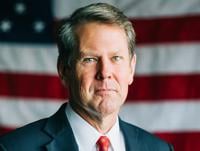Have you ever heard of the “Famous Five”? I hadn’t until I started thinking more about the “Tenacious Two” of current fame. Both sobriquets refer to United States Senators. The Five gained fame in 1959. The Two are much more recent candidates for possible recognition.
It seems that in the mid-to-late 1950s, a five-member Senate committee was formed to honor five of the Senate’s all-time “most-outstanding” former members by including their likenesses in portrait form in empty places in the U. S. Capitol’s Senate reception room. The Chairman of the committee was a young freshman member by the name of John F. Kennedy.
Kennedy and his compatriots reportedly struggled to define Senate greatness and then how to apply those traits to the chosen honorees. In writing about the deliberations regarding whom should be included, Kennedy wrote that “The value in these deliberations over our body’s historic greatness extends far beyond the mere selection of portraits. For in these (Cold War) days when political and legislative service is too often ridiculed or disdained, it is particularly desirable that we focus the nation’s attention upon the Senate and its distinguished traditions, stimulating interest in our political problems and motivations and increasing the understanding of the Senate’s role in our Government.”
Seems to me those words are still germane today, especially the ones about legislative service being “ridiculed or disdained.” Only, in the current political climate, both tend to be applicable.
For the “Famous Five,” the committee debated whether Senate greatness might be defined by legislative accomplishments or, as it suggested, by “courageous negation.” Then it thought about those members who had pretty much regularly failed to secure major legislation but had “opened the door to success for a later generation.” National leadership was mentioned, as well as personal integrity and even the respect of one’s colleagues.
In the end, the requirements for “greatness” included “acts of statesmanship transcending party and State lines.” Statesmanship was defined as “leadership in national thought and constitutional interpretation as well as legislation.” And each chosen member had to have the unanimous consent of the Committee.
One thousand former senators up for consideration were whittled down to 65 and then to five. Those who were picked to be the “Famous Five” included the “Great Triumvirate” of Daniel Webster, John C. Calhoun, and Henry Clay. Added to those noteworthy gentlemen were Robert La Follette from Wisconsin and Robert Taft of Ohio. The portraits of each were unveiled in special ceremony on March 12, 1959.
I did the research that led me to the five senators so honored because of the battles that a current Senate duo seem to be waging on an almost daily basis. I’m thinking the “Tenacious Two” could be an apt descriptor of Arizona’s Kyrsten Sinema and West Virginia’s Joe Manchin. Those two have had an oversized amount of power thrust upon them in the last 18 months. Both have a reputation as moderates in a political world where “yer either fer us or agin us,” and there ain’t no middle ground.
That reality notwithstanding, and whether you agree with their stands on issues or not, Sinema and Manchin, both sporting Ds after their names, have refused to buckle to pressure from their peers and party when they have felt things either weren’t quite right for the people they represent or were somewhat askew for the nation as a whole.
In a Senate configured to favor one party over the other by a large margin, it’s relatively easy to be a maverick of sorts and to not feel the whole quiver of slings and arrows heading toward your person. But when the Chamber is split 50-50 as is the case now, one vote can cause havoc. And havoc is just what Sinema and Machin have wrought of late.
Taking what might be an unpopular stand takes courage. Which is probably part of what elevated the five senators mentioned above to their exalted presence in the portrait room. You know, about the time John F. Kennedy was chairing that selection Committee, he also wrote a book called “Profiles in Courage” that won the Pulitzer Prize in 1957. I don’t know if Senators Sinema and Manchin would qualify for inclusion in that book or have their portraits considered for the reception room in the future, but they’re surely currently standing up for what they think is right. And whether you agree or disagree with their efforts, that type of daring and nerve isn’t often on display in the U.S. Senate today. Perhaps it should be more commonplace.












(0) comments
Welcome to the discussion.
Log In
Keep it Clean. Please avoid obscene, vulgar, lewd, racist or sexually-oriented language.
PLEASE TURN OFF YOUR CAPS LOCK.
Don't Threaten. Threats of harming another person will not be tolerated.
Be Truthful. Don't knowingly lie about anyone or anything.
Be Nice. No racism, sexism or any sort of -ism that is degrading to another person.
Be Proactive. Use the 'Report' link on each comment to let us know of abusive posts.
Share with Us. We'd love to hear eyewitness accounts, the history behind an article.